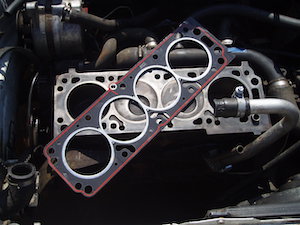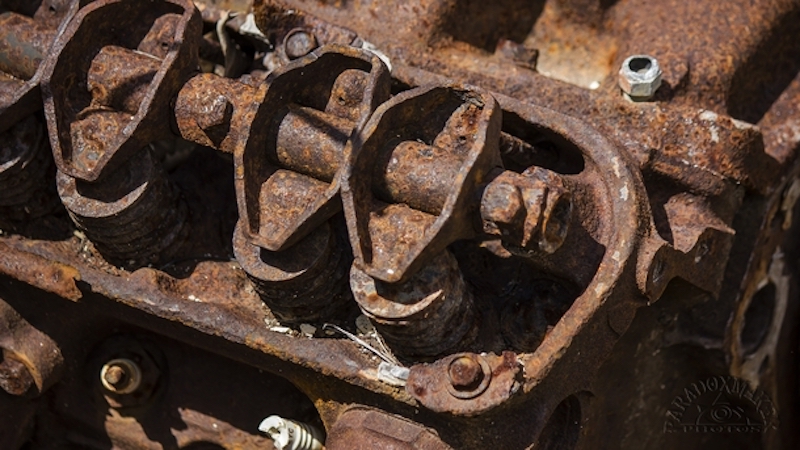If you have ever checked your engine oil and noticed droplets on the dipstick, that is a sign that you have water on your engine. Rusty water can mean trouble for your vehicle, so it is important to know the causes and to have the issue addressed as soon as possible.
What is Rusty Water?
Rusty water is a byproduct of rusty metal parts. Rust forms when iron becomes oxidized, making the outside become a reddish brown color. When the metal is sitting in water, the iron particles break free and turn the water the same color.
What Causes Rusty Water on the Engine?

Photo of a head gasket.
There are a few issues that can lead to rusty water on your engine. Some of which include:
The most common cause is a leaking head gasket. The head gasket is part of the internal combustion engine, which is one of the parts that helps seal the engine. It is small, but it’s function is essential for your car to work. It’s main purposes are to seal the cylinders from engine fluids, and cools and lubricates the engine by letting the coolant and oil move throughout. As you can imagine, a blown or leaking head gasket can cause significant problems for your engine. If the head gasket is not properly sealing the cylinders, this can allow liquids to get into the engine causing rust and overheating issues. If this is the case, it is essential to get it repaired immediately to prevent further damage.
Another cause is a blown intake manifold gasket. The intake manifold distributes air evenly into the car’s cylinders for the engine. If the intake manifold gasket breaks, coolant can possibly mix with engine oil, which dilutes the engine oil. Water-contaminated oil does not effectively lubricate, which raises the engine temperature due to increased friction. This can lead to breakage of major engine components. The increased water also can create rust water on the engine.
Rust water can also result from damaged heater hoses. Heater hoses transfer excess heat from the engine into the heater core via engine coolant. Engine coolant travels through the heater hoses out of the heater core and back to the engine. If the heater hose has damage, liquids can leak out onto the engine block showing signs of rust.
Rusty water in the engines radiator. possibly the most obvious place to see rusty water is by removing the radiator cap (ONLY WHEN THE ENGINE IS COLD) or by looking in the coolant overflow tank. Rusty water in either of these indicates you need a cooling system flush.
Why is Rusty Water on the Engine a Problem?
Rusty water itself on the engine is not necessarily bad, but it is usually indicative of a larger issue that needs to be addressed.
One reason rusty water is problematic is the presence of rust itself. Once metal has been rusting long enough, it corrodes, meaning it breaks down. This is not good on any component of your vehicle, but especially on a part as vital as the engine. This can lead to further engine damage which creates a dangerous driving situation and costly repairs.
Another reason is because if there is rusty water on the engine, something within the larger system is not functioning properly. As noted in the causes above, water in the engine is usually a sign of a leaking head gasket which is dangerous if left unattended. The other possible causes are also not conducive to safe driving conditions.
Rusty Water Engine Flush and Repairs Hamilton
Have you noticed rusty water on your engine or in your radiator or coolant overflow bottle? If so, we can help! Whether your coolant system needs to be flushed or components causing water in the engine need to be repaired, you can count on our skilled mechanics. By visiting Grimmer Motors, you can be sure you will receive quick, friendly, and effective service. If your car has a leak that needs to be repaired or you need an engine / cooling system flush, contact Grimmer Motors today and book a servicing in Hamilton!

